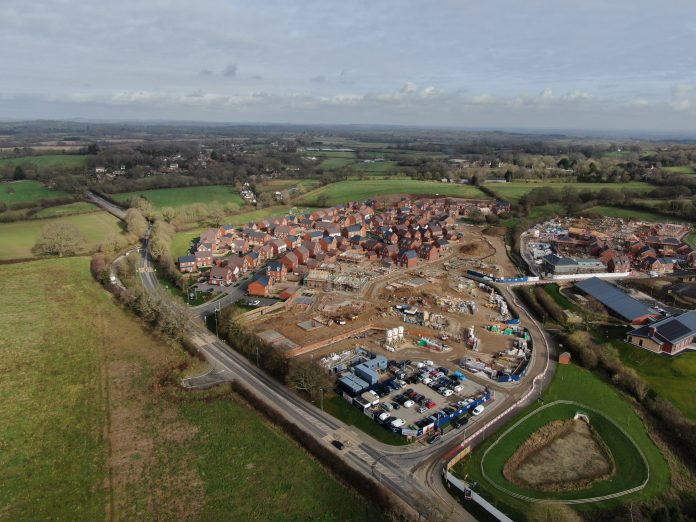The Environment Bill, which is currently going through parliament, will introduce a requirement for biodiversity net gain as a condition of planning permission in England. Aidan Thomson, partner at Bryan Cave Leighton Paisner, examines the bill’s provisions and what they could mean for developers
The Environment Bill has a number of aspects, many of which relate to how environmental matters in the UK will be regulated and policed in the absence of the EU institutions that have played a key role in this regard in recent decades.
One aspect of the bill is biodiversity net gain. The standout proposed requirement is that (with certain exceptions) every planning permission granted for development in England will be deemed subject to a pre-commencement condition requiring the formal approval by the local planning authority of a “biodiversity gain plan” for the site.
The local planning authority will only be able to approve the biodiversity gain plan if it thinks that the “biodiversity gain objective” is met.
The biodiversity gain objective
The biodiversity gain objective will be met if the “biodiversity value attributable to the development” exceeds the pre-development biodiversity value of the onsite habitat by at least 10%.
“Biodiversity value attributable to the development” appears to be reasonably wide concept, but subject to limits. It includes:
- Habitat enhancement at the development site but where works are involved in order to achieve this, there must be a planning condition, planning obligation or “conservation covenant” that ensures that such works will be maintained for at least 30 years after the development is completed.
- Habitat enhancement that is required to be carried out to a site other than the development site but only where the enhancement is required under a planning condition or “conservation covenant”, recorded in a proposed new Defra biodiversity gain site register and assured of being maintained for at least 30 years.
- The biodiversity value of any “biodiversity credits” purchased for the development from Defra. These credits are generated by Defra from its own biodiversity improvement projects. The cost of the credits will be set in a manner that ensures that it remains attractive for developers to organise their own qualifying biodiversity enhancements, either at the development site or elsewhere. In other words, biodiversity credits will not come cheap.
In an effort to discourage damage to habitats on future development sites before development starts (which might otherwise reduce their pre-development biodiversity value and make it easier to achieve a 10% improvement), damage to habitats as a result of activities after 30 January 2020 will not be taken into account for the purpose of assessing pre-development biodiversity value, unless in accordance with a planning permission or other consent/permission.
Assessing the value of biodiversity: The biodiversity metric
The bill proposes that the pre- and post-development biodiversity value of the development site, and any registered offsite biodiversity gains, are calculated by reference to the “biodiversity metric”. The biodiversity metric was developed by Defra and updated by Natural England in 2019.
The metric assesses the biodiversity quality of a site based on the type, distinctiveness, condition, size, strategic significance and connectivity of its habitat. It also assesses the difficulty of creating or restoring habitat (risk of failure), the time-based risk and the risk associated with offsite works where biodiversity net gains cannot be fully delivered onsite.
The biodiversity metric is intended to provide a robust and consistent assessment of biodiversity. It is not completely rigid, however, and should always be used with professional judgement. The biodiversity metric may not always be suitable for certain types of assets in relation to which the use of a bespoke metric might be more appropriate.
Conservation covenants
One of the ways in which a developer can demonstrate that the biodiversity gains in its biodiversity gain plan are assured is by ensuring that a “conservation covenant” (a proposed new device in the bill) to ensure that something is done, or not done, on the relevant land is entered into.
Conservation covenants are agreements between a landowner and a responsible body (to be designated by the secretary of state). Registered as a local land charge, these legally binding agreements will run with the land.
They can be for a finite period but the freehold default position is that conservation covenants bind the land in perpetuity. Therefore, land subject to a conservation covenant could be considered sterilised for future development. Landowners can be released from conservation covenant obligations after parting with their interest in the land. However, the successor will step into the landowner’s shoes.
Concluding thoughts
If the proposals in the Environment Bill are implemented in their current form, much will change for developers.
They will need to appoint ecologists early on to navigate the biodiversity metric and consider and prepare the biodiversity gain plan.
They will need to consider fully the logistics of delivering enhancements over an extended period and how (if enhancements are to be delivered on third party land) they will persuade third parties to enter into conservation covenants, with all of the restrictions that these may entail.
They will also need to remember that future development of sites subject to conservation covenants will be more onerous because the pre-development biodiversity value will include the biodiversity improvements that are already “locked in” by the conservation covenant.
Aidan Thomson
Partner
+44 (0)20 3400 4075
Twitter: BCLPlaw
LinkedIn: Bryan Cave Leighton Paisner

















